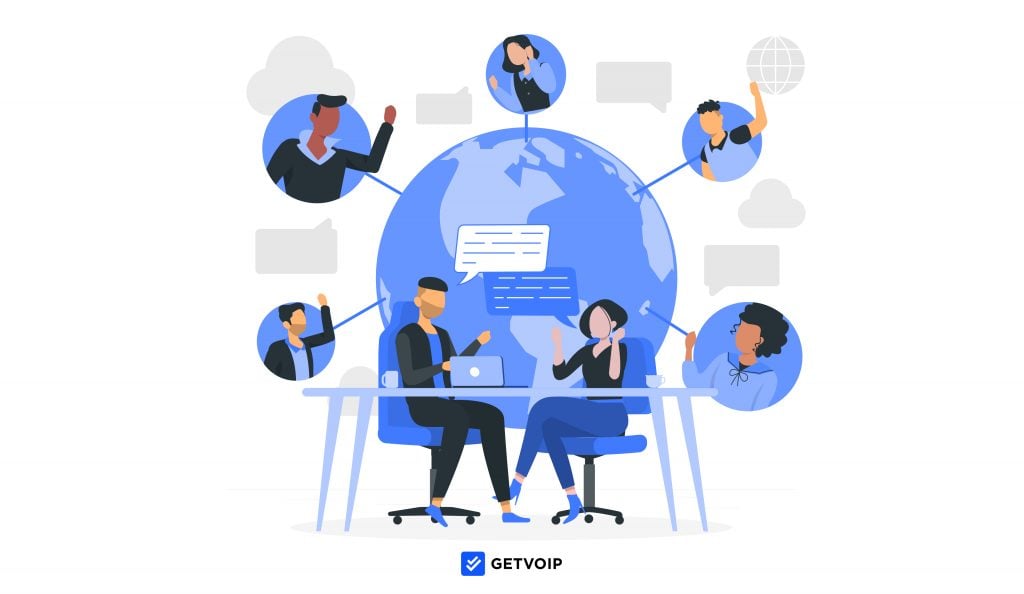- Introduction
- 1. Defining Business Goals and Requirements
- 2. Evaluating the Experience and Expertise of the Vendor
- 3. Effective Communication and Collaboration
- 4. Intellectual Property Protection
- 5. Cost Considerations
- 6. Risk Assessment and Mitigation
- 7. Choosing the Right Development Methodology
- 8. Quality Control
- 9. Staff and Resource Availability
- 10. Offshore vs. Nearshore Outsourcing
- 11. Contract and Agreement Management
- 12. Maintenance and Support
- Conclusion
- Frequently Asked Questions (FAQs)
Table of Contents
Key Considerations Before Outsourcing Software Development

Introduction
Does deploying projects to separate organizations really improve your projects? Outsourcing is a practice incorporated by businesses for quite some time. This practice generally requires business organizations to assign projects to agencies within a limited timeline.
The team of professionals present there work tirelessly on projects like these and deliver you the final output that aligns with your preferences and needs. Despite being such a cost-effective and trusted option to get projects done, the world of outsourcing is still unknown to a lot of businesses.
This comprehensive guide focuses on throwing light on this innovative measure and showcases how one can put it to use and yield positive results. The numerous factors that need to be considered before opting for outsourcing software development are described in detail below.
These considerations will help in making a better choice when there is a need to outsource projects that align with their specific requirements and goals.
1. Defining Business Goals and Requirements
Before outsourcing software development, it is essential to clearly define your business goals and requirements. This step sets the foundation for your outsourcing project.
Importance of Defining Business Goals and Requirements
Identifying your organization’s goals and aspirations right before choosing an organization for outsourcing helps in making a better choice.
With a concise idea of their goals and requirements, businesses would be able to look for outsourcing companies that fit into their set of expected outcomes.
Additionally, by determining their goals and objectives, entrepreneurs can easily and directly communicate what they wish to achieve through this partnership.
2. Evaluating the Experience and Expertise of the Vendor
One of the key considerations before outsourcing software development is evaluating the experience and expertise of the vendor.
Assessing Vendor Experience
Evaluating the capabilities of the potential outsourcing is also a must. Since these agencies will be responsible for the overall outcome of your project, it is important to examine whether they are fit for the task or not.
For this, one can review their industry experience, previous client testimonials, and the types of projects they have successfully delivered.
Analyzing Vendor Expertise in the Required Technology Stack
A quick check of the agency’s field experience should be followed by a technical assessment of their stack. Ensure that the technologies demands of your projects can be properly filled up by their team or not.
Analyzing the technological stack would also require reviewing their skills in programming languages, frameworks, databases, and any specific tools that may be necessary for your project.
3. Effective Communication and Collaboration
Smooth communication and collaboration are pivotal for successful outsourcing projects.
Language and Cultural Considerations
At times, language becomes a barrier during outsourcing. To avoid that, look for outsourcing agencies that have at least one language in common with your organization.
The presence of a common language helps in communicating ideas, opinions, and strategies regarding the project effectively.
Communication Channels

A proper communication channel must be established between the two parties. Through these channels regular updates and information can be exchanged.
A proper communication is important as it fosters a relationship of trust and transparency between the business and their service providers.
4. Intellectual Property Protection
Protecting intellectual property rights is a crucial consideration before outsourcing software development.
Legal Considerations When Outsourcing
Outsourcing projects to different agencies generally require partnering with companies that do not reside within the same geographical boundaries.
Thus, consulting a legal instructor or keeping a legal expert present during the exchange is important. This legal expert will make sure that any legal restraints are not compromised during the project.
IP Protection Strategies
Every project is always open to risk if not handled carefully or equipped with proper measures. To make sure that your outsourced project does not fall into that category, one must integrate strict property protection strategies into it.
This practice restricts access and regularly monitors and audits the outsourced team's access and activities.
Ensuring Data Privacy and Security

The potential outsourcing agency should be equipped with proper data protection and privacy measures. The agency should be able to develop projects that follow the regulatory standards.
Also, it is the responsibility of the agency to incorporate and safeguard the project from any unnecessary security breaches.
5. Cost Considerations
When outsourcing software development, cost-effectiveness is often a primary motivation. However, it is crucial to consider all cost-related factors to ensure a realistic budget and minimize potential financial risks.
Evaluating the Total Cost of Outsourcing
Evaluate not only the vendor's development costs but also the additional expenses associated with outsourcing, such as infrastructure costs, project management overheads, and any potential revisions. Understanding the complete cost picture will help avoid unexpected budget overruns.
Factors Impacting the Cost of Outsourcing
There are certain factors that govern the overall financial aspect of outsourcing. These factors might range from the complexity of the project, the vendor's location, the expertise required, and any additional services required, such as maintenance and support.
Considering one’s budgetary allocations before finalizing the outsourcing agency is a must.
Suggested Reading : What is Software Development Outsourcing? A Complete Guide
6. Risk Assessment and Mitigation
When outsourcing software development, it is crucial to identify and mitigate potential risks. By being proactive in risk assessment and implementing mitigation strategies, you can minimize the impact of unforeseen challenges.
Identifying Potential Risks when Outsourcing
Evaluate the potential risks associated with outsourcing, such as delays in project timelines, communication gaps, intellectual property infringement, and quality assurance issues. Conduct a thorough risk assessment and identify possible mitigation strategies for each risk.
Risk Mitigation Strategies
Implement effective risk mitigation strategies to address the identified risks.
This may include regular project monitoring, having backup plans, setting clear expectations in the contract, establishing communication escalation paths, and maintaining open lines of communication to address any issues promptly.
Despite careful planning, unexpected issues may still arise during the outsourcing process. Establish a robust issue resolution framework to handle such situations promptly.
7. Choosing the Right Development Methodology
Selecting the appropriate development methodology is crucial for successful outsourcing projects. The choice between Agile and Waterfall methodologies depends on the project's nature, complexity, and flexibility requirements.
Understanding the Vendor's Development Methodology
Understand the development methodology used by the outsourcing vendor. Evaluate whether their approach aligns with your project goals and requirements. Assess their ability to adapt to your preferred methodology, especially if you have specific development practices in place.
Evaluating Agile vs. Waterfall Methodology

Consider the pros and cons of both Agile and Waterfall methodologies. Agile offers flexibility, allows for iterative development, and promotes constant collaboration.
Waterfall, on the other hand, is more structured and suitable for projects with well-defined requirements. Choose the methodology that best suits your project's characteristics and aligns with your preferred working style.
If the vendor follows a specific methodology, be open to adapting your processes accordingly.
8. Quality Control
Implementing robust quality control measures is crucial for the successful delivery of a high-quality software product. It ensures that your outsourced team maintains the desired standards throughout the development process.
Vendor's Quality Control Measures
Understand the quality control measures implemented by the outsourcing vendor.
Quality Assurance and Testing Processes
Ensure that appropriate quality assurance and testing processes are integrated into the software development lifecycle. This includes unit testing, integration testing, system testing, and user acceptance testing. Clear testing requirements and comprehensive test cases will help maintain the expected quality standards.
Performance Tracking and Reporting
Implement performance-tracking mechanisms to monitor the progress of the software development project. Regular status reports, milestones, and progress updates will help assess the quality and adherence to project timelines.
This transparency will enable effective collaboration and timely decision-making.
9. Staff and Resource Availability
Evaluate the outsourcing vendor's staff and resource availability to ensure the smooth execution of your project.
Evaluating Staff and Resource Availability

Assess the size and skill set of the vendor's development team. Determine if they have sufficient resources available to handle your project without compromising on quality or timelines. Verify if they have experienced project managers and the ability to scale their team if required.
Analyzing Workforce Capabilities
Evaluate the skill levels and expertise of the outsourcing vendor's team members. Ensure that they have the necessary knowledge and experience to handle your specific project requirements. This analysis will help you assess their ability to deliver the desired outcomes.
Confirm that the vendor can provide the necessary resources consistently throughout the software development lifecycle.
Suggested Reading : Exploring the Benefits of Outsourcing Software Development
10. Offshore vs. Nearshore Outsourcing
When considering outsourcing software development, it is crucial to evaluate the benefits and drawbacks of offshore and nearshore outsourcing models.
Identifying the Difference between Offshore and Nearshore Outsourcing
Outsourcing has a similar partner which is known as a nearshore model. There is often a great confusion between the two as business organizations consider them as the same.
Where outsourcing would deploy a project to an agency that does not fall under your geographical borders, nearshore models are more or less situated within the same geographical restraints.
For outsourcing models, businesses are required to draw out a particular period that is feasible in both the time zones; nearshore models need not worry about any additional factors as such. Both entities are different from one another both in terms of features and services.
Understanding the Benefits and Risks of Both Models
Both outsourcing and nearshore models have strengths and weaknesses. Outsourcing projects can be a cost-effective measure that just demands regular communication between the parties.
Nearshore can offer better coordination due to the similarity in time zones, but at the same time, can be a little more expensive than the former.
Businesses must analyze their project requirements before going ahead with either of them.
11. Contract and Agreement Management
Developing a legally binding contract and agreement is a critical step before outsourcing software development. A well-drafted agreement ensures that both parties have a clear understanding of their responsibilities and helps mitigate potential disputes.
- Developing a Legal Contract and Agreement
- Understanding the Terms and Conditions
- Clearly Communicate Vendor Expectations and Deliverables
12. Maintenance and Support
Post-launch maintenance and support are critical for the long-term success and sustainability of your software product.
Importance of Maintenance and Support after Project Completion
Recognize the significance of maintenance and support even after the software development project is completed. Having a dedicated team available for bug fixes, updates, feature enhancements, and technical support ensures the optimal performance and continuous improvement of your software.
Understanding Post-launch Maintenance and Support Requirements
The journey with an outsourcing agency must not end right after your project is delivered. Therefore, business organizations must discuss the post-development services they wish to receive from the outsourcing team and how they can be contacted in times of emergency first.
Finalizing these concepts will avoid any confusion regarding the post-development services in the future.
Developing a Maintenance and Support Plan with the Vendor
A major plan that both the outsourcing agency and the business organization need to finalize before beginning the project is a post-development support plan. In this plan, the outsourcing agency will look after any issues that arise in the system after development and take care of them accordingly.
Plans like service level agreements (SLAs) can also be considered as they guarantee prompt resolution and minimize any potential disruptions.
Suggested Reading : Key Considerations Before Outsourcing Software Development
Conclusion
Before outsourcing software development, businesses need to carefully consider several factors to ensure a successful outcome. Defining business goals and requirements, evaluating the experience and expertise of the vendor, choosing the right development methodology, contract and agreement management, and the significance of maintenance and support are vital considerations that need attention.
By thoroughly assessing these factors, businesses can mitigate potential risks, streamline the outsourcing process, and achieve the desired results. Successful outsourcing can help organizations unlock cost savings, access specialized skills and technologies, and focus on their core business activities.
With proper planning and research, businesses can leverage outsourcing to their advantage and drive growth in the competitive global market.
Frequently Asked Questions (FAQs)
How do I determine if a software development company is trustworthy?
To determine trustworthiness, check the company's reputation, client reviews, and testimonials. Additionally, consider their experience, certifications, and adherence to industry standards.
Can I retain control over the software development process when outsourcing?
Yes, you can maintain control by setting clear project goals, defining milestones, and establishing regular progress updates. Effective project management helps you stay informed and involved in the process.
What should I consider when choosing the location for outsourcing software development?
Consider factors like time zone differences, language barriers, cultural affinity, and local regulations. Choose a location that offers a favorable environment for collaboration and seamless communication.
How can I effectively manage the outsourcing relationship?
Effective management includes setting clear expectations, establishing regular communication, providing feedback, and monitoring progress. Building a strong working relationship enhances collaboration and success.
Can I save costs by outsourcing software development?
Outsourcing software development can often help businesses save costs. However, it is important to consider factors like quality, expertise, and hidden costs to make a well-informed decision.
Table of Contents
- Introduction
- 1. Defining Business Goals and Requirements
- 2. Evaluating the Experience and Expertise of the Vendor
- 3. Effective Communication and Collaboration
- 4. Intellectual Property Protection
- 5. Cost Considerations
- 6. Risk Assessment and Mitigation
- 7. Choosing the Right Development Methodology
- 8. Quality Control
- 9. Staff and Resource Availability
- 10. Offshore vs. Nearshore Outsourcing
- 11. Contract and Agreement Management
- 12. Maintenance and Support
- Conclusion
- Frequently Asked Questions (FAQs)





